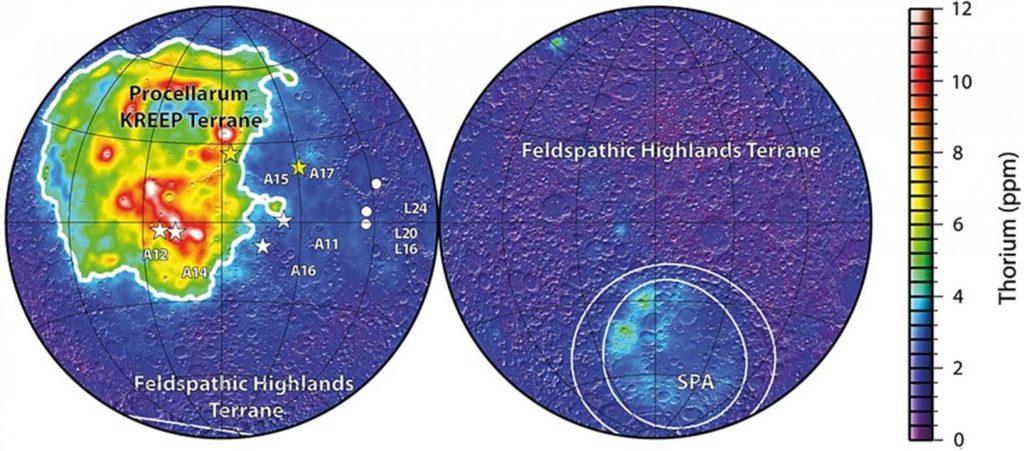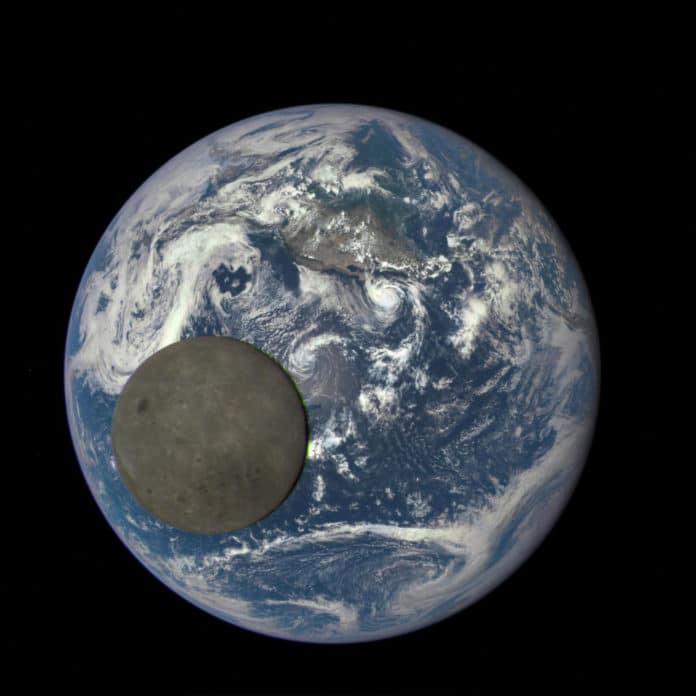The Moon is a relatively cold rocky body, with a limited amount of water and little tectonic processing. Scientists presently believe the Earth‐Moon system formed when a Mars‐sized body dubbed Theia catastrophically collided with the proto‐Earth, causing the components of both bodies to mix.
The debris of this collision is thought to have reasonably quickly, maybe over a couple of million years, isolated to form the Earth and Moon. The Earth wound up being larger and developed in a sweet spot as far as its size being perfect for it to turn into a dynamic planet with atmospheres and oceans. Earth’s Moon wound up being smaller and didn’t have sufficient mass to have these characteristics.
Decades of observations have demonstrated that lunar history was much more dynamic than expected with volcanic and magnetic activity occurring as recently as 1 billion years ago, much later than expected.
A new study suggests that this is because radioactive elements were distributed uniquely after the catastrophic Moon-forming collision.
In the late 1960s and early 1970s, NASA’s Apollo missions landed six spacecraft on the Moon, and astronauts brought back 382 kg of Moon rocks to try to understand the origin of the Moon using chemical analysis. Having samples in hand, scientists quickly figured out the relative darkness of these patches was due to their geological composition, and they were, in fact, attributable to volcanism.
They also identified a new type of rock signature they named KREEP – short for rock enriched in potassium (chemical symbol K), rare‐earth elements (REE, which include cerium, dysprosium, erbium, europium, and other elements which are rare on Earth) and phosphorus (chemical symbol P) – which was associated with the maria. But why volcanism and this KREEP signature should be distributed so unevenly between the near and far sides of the Moon again presented a puzzle.
In this new study, scientists used a combination of perception, lab examinations, and computer modeling to bring some further clues as to how the Moon gained its near‐ and far‐side asymmetry. These clues are connected to a significant property of KREEP.
Potassium (K), thorium (Th), and uranium (U) are, importantly for this story, radioactively unstable elements. This means that they occur in a variety of atomic configurations that have variable numbers of neutrons. These variable composition atoms are known as ‘isotopes,’ some of which are unstable and fall apart to yield other elements, producing heat.
The heat from the radioactive decay of these elements can help melt the rocks they are contained in, which may partly explain their co-localization.
The study found that along with enhanced heating, the inclusion of a KREEP component to rocks also lowers their melting temperature, compounding the regular volcanic activity from simply radiogenic decay models. Because most of these lava flows were emplaced early in lunar history, this study also adds constraints about the timing of the Moon’s evolution and the order in which various processes occurred on the Moon.
After multiple experiments with various KREEP components, scientists analyzed the implications this would have on the timing and volume of volcanic activity at the lunar surface, providing valuable insight about the early stages of evolution of the Earth‐Moon system.

ELSI co‐author Matthieu Laneuville comments, “Because of the relative lack of erosion processes, the Moon’s surface records geological events from the Solar System’s early history. In particular, regions on the Moon’s near side have concentrations of radioactive elements like U and Th, unlike anywhere else on the Moon. Understanding the origin of these local U and Th enrichment can help explain the early stages of the Moon’s formation and, as a consequence, conditions on the early Earth.”
The study suggests that the Moon’s KREEP‐enriched maria has influenced lunar evolution since the Moon formed. Scientists think the evidence for these kinds of non‐symmetric, self‐amplifying processes might be found in other moons in our Solar System and maybe ubiquitous on rocky bodies throughout the Universe.
The study was conducted by the Earth‐Life Science Institute at Tokyo Institute of Technology, the University of Florida, the Carnegie Institution for Science, Towson University, NASA Johnson Space Center, and the University of New Mexico.
Journal Reference:
- Steohen M. Elardo et al. Early crust building enhanced on the Moon’s nearside by mantle melting-point depression. Nature Geoscience. DOI: 10.1038/s41561-020-0559-4
